There’s something primal about a great engine sound. It’s not just noise; it’s mechanical music, a harmony of combustion, revs, and unfiltered personality. Ask any gearhead what made them fall in love with cars, and odds are they’ll mention the sound before they talk about speed. The best sounding cars don’t just perform; they make you feel something long before you hit redline.
But in a world tightening its grip with EV mandates and stricter noise and emissions regulations, pure engine sound is becoming endangered. Turbos, filters, and batteries are replacing the snarls, growls, and high-rev screams that defined driving passion for decades. Thankfully, a few legends — some old, some recent — still carry that flame. Here are ten cars that didn’t just sound good. They changed what we thought cars could be.
10. Mazda RX-7 FD (1992–2002)
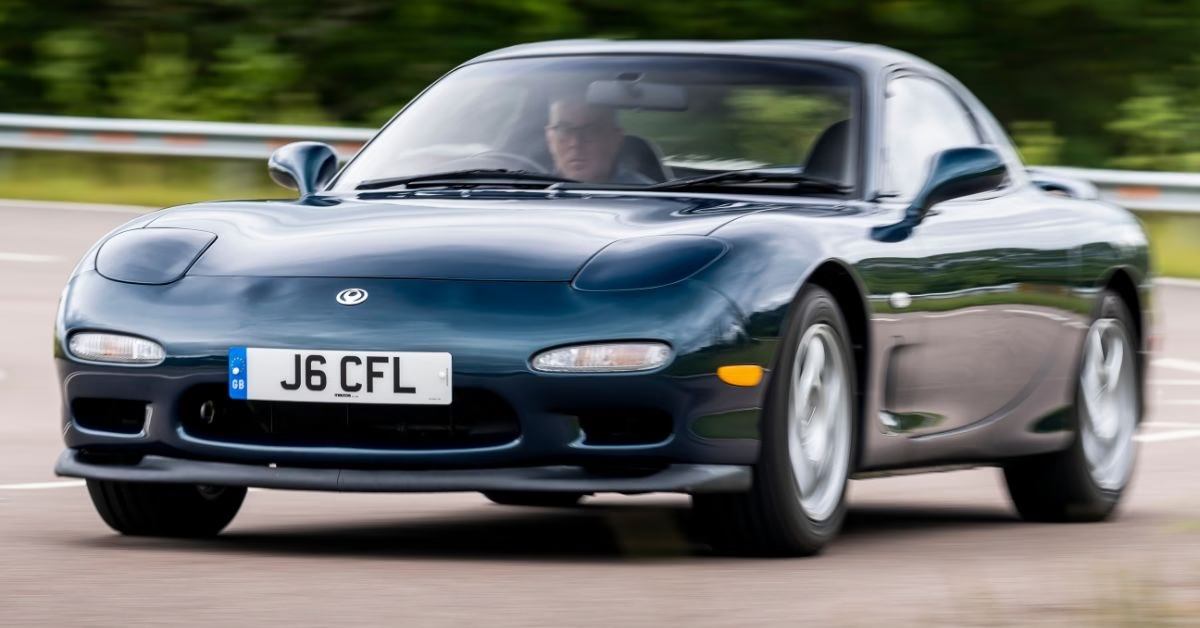
The RX-7 FD isn’t about brute force loudness; it’s about a unique, almost alien shriek. Its 1.3-liter twin-rotor Wankel engine, paired with twin turbos and a 5-speed manual, didn’t need massive displacement to make its presence known. It thrived on revs, boost, and pure character, making it one of the best sounding cars with a small displacement engine. A legend in both tuning and motorsports, the FD was light, agile, and incredibly easy to fall for.
When new, it was around $30,000 to $40,000, but clean examples today can fetch over $60,000, with rare Spirit R editions commanding even more. Its sound is thin yet wicked, often described as a swarm of angry hornets caught in a turbine. Enthusiasts love its signature rotary whine, turbo flutter, and high-pitched revs that are instantly recognizable and utterly unique.
9. TVR Sagaris (2005–2006)
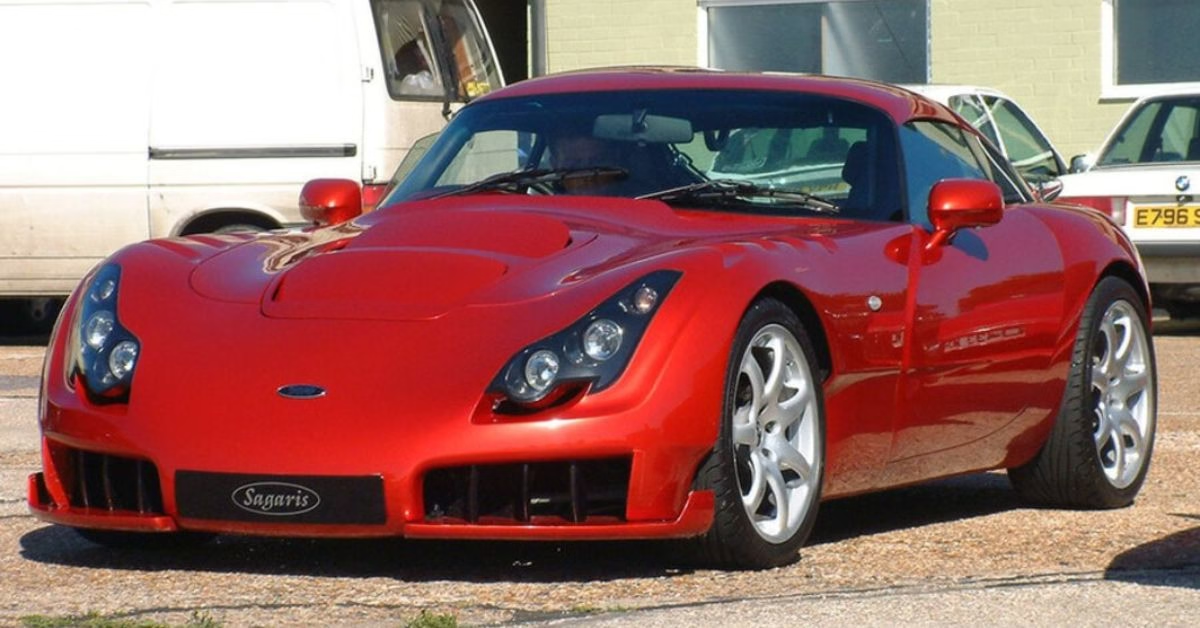
The TVR Sagaris wasn’t designed to make sense; it was built to thrill, unsettle, and likely get you into delightful trouble. TVR, that wonderfully eccentric British marque, unleashed the Sagaris in 2005 as a street-legal race car with no driver aids, no airbags, and a soundtrack capable of cracking glass. Its short two-year production run only adds to its cult status.
Under the hood, a naturally aspirated 4.0-liter straight-six, developed in-house, barely fits. Pushing around 406 hp to the rear wheels via a 5-speed manual and weighing under 2,500 pounds, it was a wild ride. Originally about £49,000 in the UK, prices now range from £80,000 to £120,000, and you’ll struggle to find two identical.
The sound? Absolutely feral. It doesn’t purr; it yells—a raw, metallic rasp, aggressive intake roar, and unfiltered combustion. With no sound deadening and no traction control, you get the pure, unadulterated voice of a straight-six with zero interest in politeness.
8. Ford Mustang Shelby GT350 / GT350R (2015–2020)

The GT350 was a game-changer for the Mustang. It was Ford’s bold reply to anyone who claimed muscle cars couldn’t handle corners. Debuting in 2015, it introduced a high-revving, motorsport-derived flat-plane crank V8, a first for an American production car. The GT350R took it further, shedding weight with carbon fiber wheels and no back seats, all tuned for the track.
Its 5.2-liter “Voodoo” V8 howls to an 8,250 rpm redline, making 526 hp, sent to the rear wheels via a 6-speed manual. New, the GT350 started around $49,000, with the R at about $63,000. Today, clean GT350Rs often command $70,000 to $100,000, holding their value remarkably well. But the real legend is its sound. That flat-plane crank delivers a raw, raspy, almost exotic note, unlike any other Mustang. At high revs, it transforms into a wild mechanical scream, far closer to a Ferrari than traditional Detroit muscle, with sharp, barking cracks on gear changes.
7. BMW E92 M3 (2007–2013)

Many consider the E92 M3 to be one of BMW’s last truly uncompromised driver’s cars. It bravely swapped the traditional inline-six for a high-revving 4.0-liter naturally aspirated V8, pumping out 414 horsepower. Paired with either a 6-speed manual or a 7-speed dual-clutch transmission and standard rear-wheel drive, it was an enthusiast’s dream.
Produced from 2007 to 2013, the E92 M3 perfectly blended daily usability with razor-sharp handling and a soundtrack that’s part mechanical growl, part high-pitched scream. The V8’s bark is distinct, raw, and aggressive without being excessive. Starting around $62,000 new, well-maintained examples now fetch $50,000 to $70,000, consistently climbing.
The exhaust note is genuinely addictive, telling a story of balanced engineering where sound and performance were meticulously crafted together. For many, the E92 M3 remains the benchmark for how a naturally aspirated enthusiast car should sound.
6. Mercedes-Benz C63 AMG Black Series (2012–2015)

Subtlety was clearly not on the agenda for the C63 Black Series. Mercedes took the regular C63 coupe, stripped it down, and unleashed a wild beast. Flared arches, aggressive aero, no rear seats, and a naturally aspirated 6.2-liter V8 that sounded like a DTM race car on a rampage. It unleashed 510 horsepower and 457 lb-ft of torque to the rear wheels through a 7-speed AMG Speedshift automatic.
Launched in 2012, with a starting price around $110,000, only about 800 were built globally, and just over 100 made it to the U.S. Today, prices have soared past $150,000 and continue to climb, especially for low-mileage collector’s items. The soundtrack? Pure, unadulterated chaos. It’s not refined, and that’s precisely the point. Fire it up, and the entire neighborhood knows. Mash the throttle, and it barks, snarls, and bellows with raw rage. This V8 doesn’t want to sing; it wants to pick a fight.
5. Ferrari 458 Italia (2009–2015)
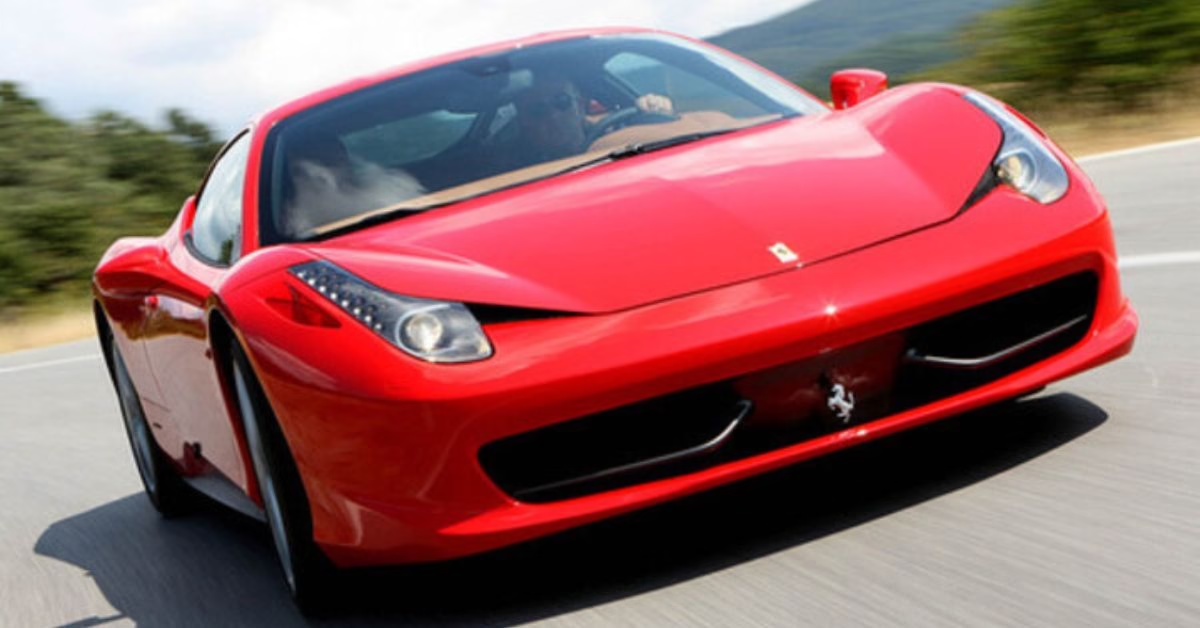
The Ferrari 458 Italia truly marked the end of an era. Launched in 2009 and replaced in 2015, it stands as the last naturally aspirated V8 Ferrari before the turbo era began. Developed with input from Michael Schumacher and designed by Pininfarina, the 458 was not just fast; it was one of the most intuitive and engaging Ferraris to drive. Its 4.5-liter naturally aspirated V8 screams to 9,000 rpm, producing 562 hp, sent to the rear wheels via a 7-speed dual-clutch transmission.
New, it started around $230,000. Today, clean examples comfortably sit between $210,000 and $300,000, and values are still rising. What truly elevates the 458 is its high-pitched, razor-sharp exhaust note—no fake enhancements, no hidden valves. It’s raw, mechanical, and addictively loud, often hailed by owners as the last Ferrari that genuinely sounded like a Ferrari. The downshifts alone are enough to turn heads a block away.
Suggested:
4. Porsche Carrera GT (2004–2006)
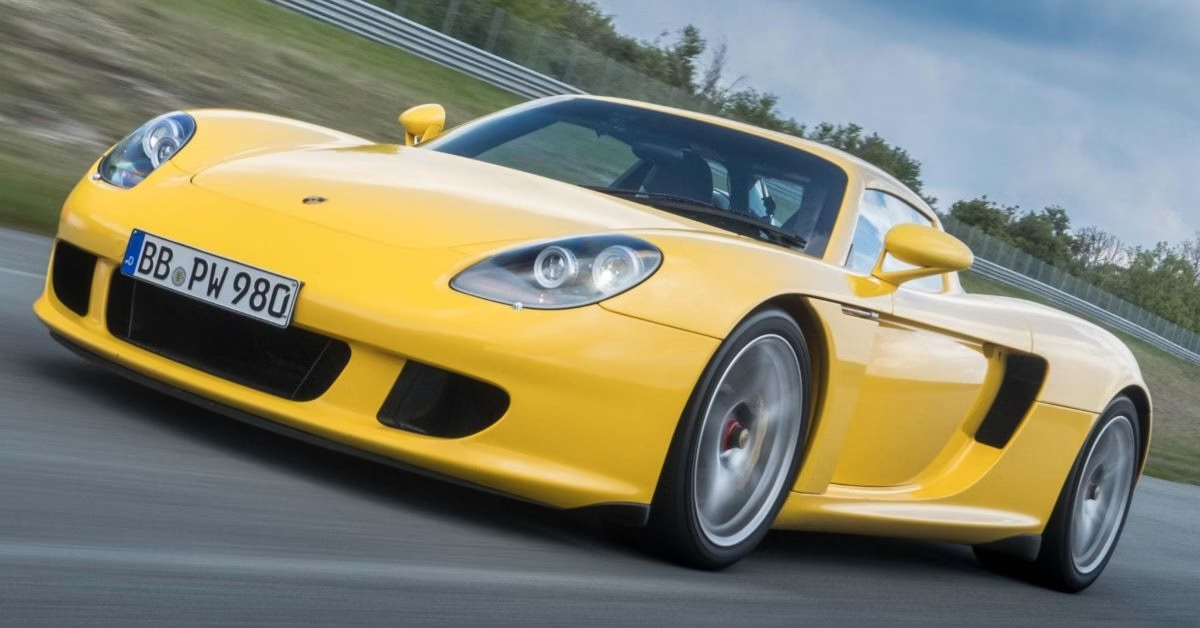
The Porsche Carrera GT was never initially meant for production. Born as a Le Mans prototype, Porsche famously pivoted, transforming it into a road-going supercar between 2004 and 2006. With only 1,270 units built worldwide, it’s now revered as one of the most analog, demanding, yet incredibly rewarding cars ever created. At its heart lies a 5.7-liter naturally aspirated V10, originally engineered for racing, producing 603 hp.
It’s exclusively mated to a 6-speed manual transmission with a carbon-ceramic clutch, sending power to the rear wheels. MSRP was around $440,000 new, but today, be prepared to pay between $1.5 and $2.5 million, depending on condition and mileage. The sound is truly otherworldly. At high revs, the Carrera GT doesn’t just sing; it howls with a dry, metallic scream unlike anything else on the road.
3. Aston Martin V12 Vantage (2009–2018)

Some cars just sound fast. The V12 Vantage, however, sounds like it’s genuinely angry that you even dared to look its way. Aston Martin famously shoehorned the enormous 5.9-liter V12 from the DB9 into their smallest chassis, the V8 Vantage. No turbos, no filters, just a naturally aspirated brute practically sitting on your shins. The result? A short-wheelbase grand tourer boasting 510 horsepower, a manual gearbox, and a howl that builds into a full-throated roar at high RPM.
It wasn’t the quickest in its class, but it delivered something far more addictive: presence. Every downshift is a thunderclap; every tunnel becomes a private concert hall. Prices started around $180,000 new. Today, the V12 Vantage is a genuine cult classic, with good examples fetching $100,000 to $160,000, and rare versions like the V600 or Vantage S commanding significantly more.
2. Lexus LFA (2010–2012)

The Lexus LFA is one of those incredibly rare cars that left a far bigger legacy than its modest sales figures might suggest. Built from 2010 to 2012, with only 500 units produced, it was Lexus’s audacious answer to the established European supercar elite. Its 4.8-liter naturally aspirated V10, developed with expert help from Yamaha’s music division, revs so incredibly fast that it actually required a digital tachometer just to keep pace.
With 552 horsepower routed to the rear wheels through a 6-speed automated manual, the LFA isn’t just fast; it’s a pure theatrical experience. The sound it produces is often compared to a Formula 1 car, a testament to the meticulous acoustic tuning in both its intake and distinctive triple-exit exhaust. At launch, it cost $375,000. Today, clean examples easily surpass $1 million, and the even rarer Nürburgring Editions have pushed values even higher.
1. Pagani Zonda (1999–2017)
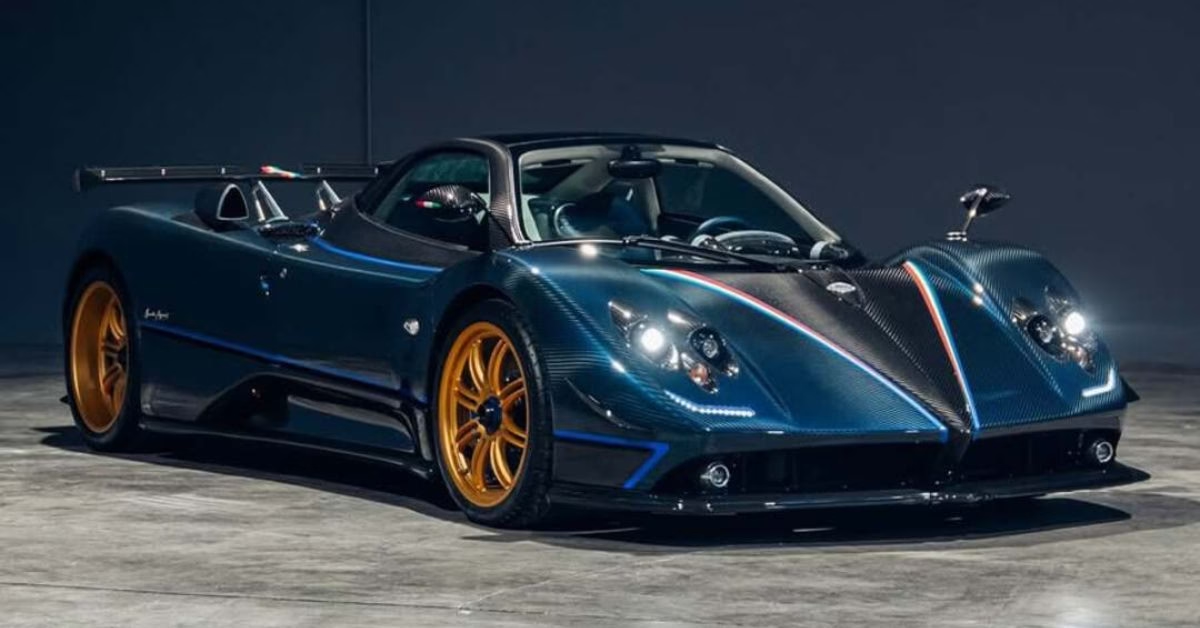
The Zonda was never built for the masses. It was Horacio Pagani’s singular vision of what a hypercar should embody: hand-crafted carbon fiber, obsessive attention to detail, and a soundtrack that feels orchestrated by an opera conductor with a profound love for beautiful chaos.
First launched in 1999 and continually evolving until the final track-only Revolución in 2017, the Zonda didn’t just follow supercar rules; it utterly rewrote them. At the heart of nearly every Zonda is a naturally aspirated 7.3-liter AMG-built V12, paired with a 6-speed manual or sequential gearbox and rear-wheel drive. Output ranged from 444 hp in early models to over 800 hp in later editions.
Each version was bespoke, and the prices reflected that, starting near $300,000 back then, with modern resale values now easily clearing $3 to $15 million, depending on rarity. But what truly defines the Zonda is its sound. It doesn’t growl. It doesn’t howl. It shrieks. There’s an aggressive, high-pitched, mechanical scream that kicks in at high RPMs, backed by visceral intake snarls and exhaust cracks that feel utterly primal.

